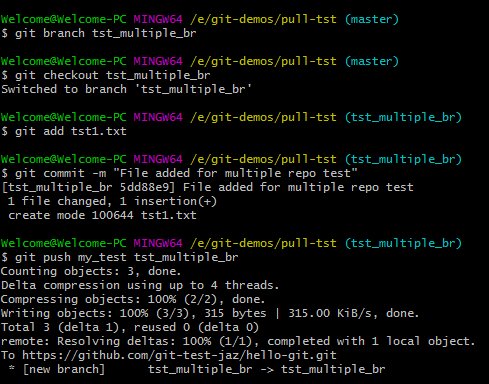
Git add remote origin github update#
This meant that everybody always had access to the same data, because they were all working from the same server, but changes were slow to update and relied on a stable internet connection at all times.īecause all work stored in a Git repository lives in your local file system, source control operations are blazing fast and don’t require an internet connection, since you don’t upload each change to a server as it happens. Those tools were known as centralized version control systems ( SVN or Subversion are the most well known examples), and they only operated on data hosted on a server by uploading changes in real time. This is different from many of the source control tools that preceded Git. In fact, Git is referred to as a distributed version control system because the source code is stored, or distributed, locally across any number of computers and servers. To understand what a remote repository is, it’s important to first understand that Git stores and operates on your data in your local file system. This error is usually caused by misunderstanding one of several things: what a remote repository is, how the `remote` command works, or more specifically what “origin” part of these commands means. To help you avoid making this mistake again, let’s unpack the concept of remote repositories a little.



It’s possible to inadvertently configure your local repository wrong if you don’t totally get what the commands that you’re running mean, or if you cloned a repository that already has a remote with the name “origin” configured.


 0 kommentar(er)
0 kommentar(er)
